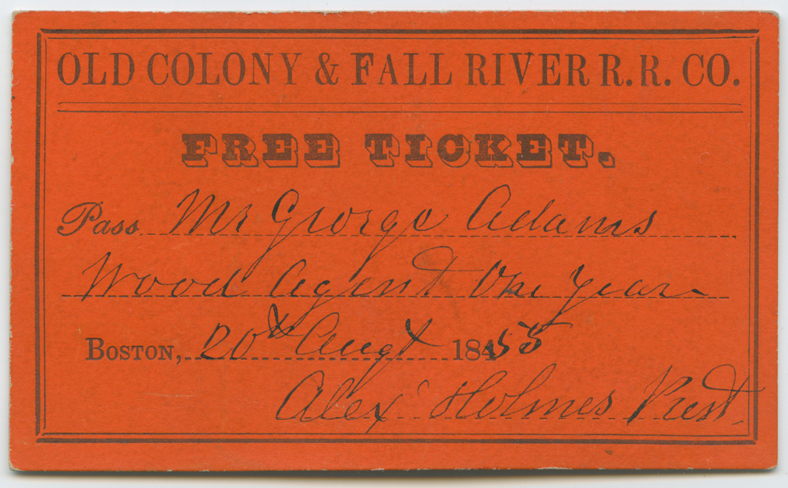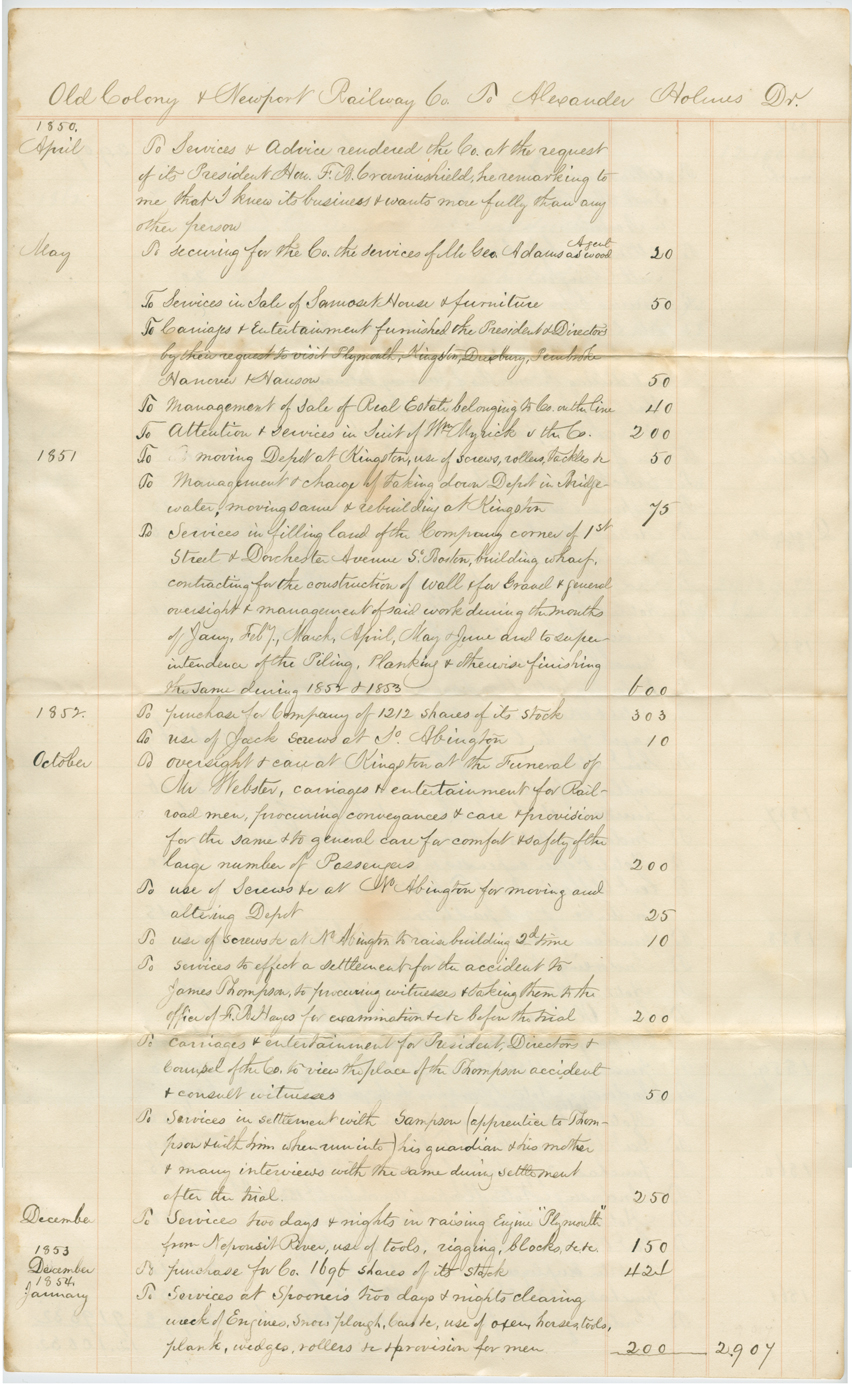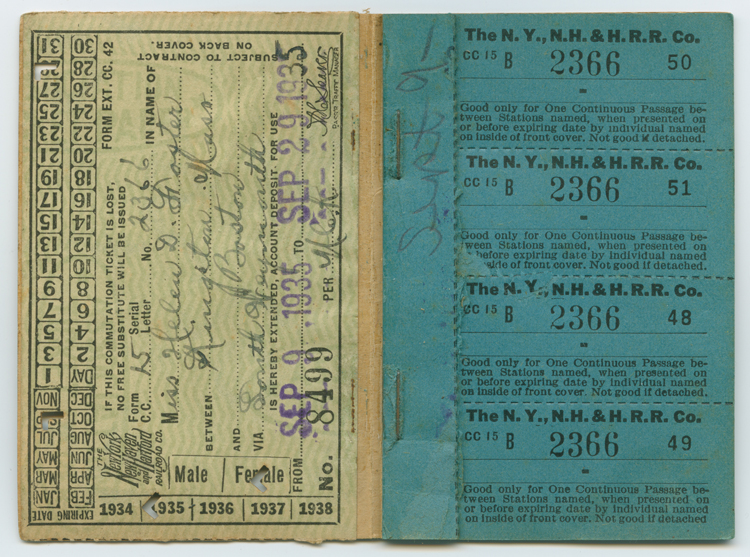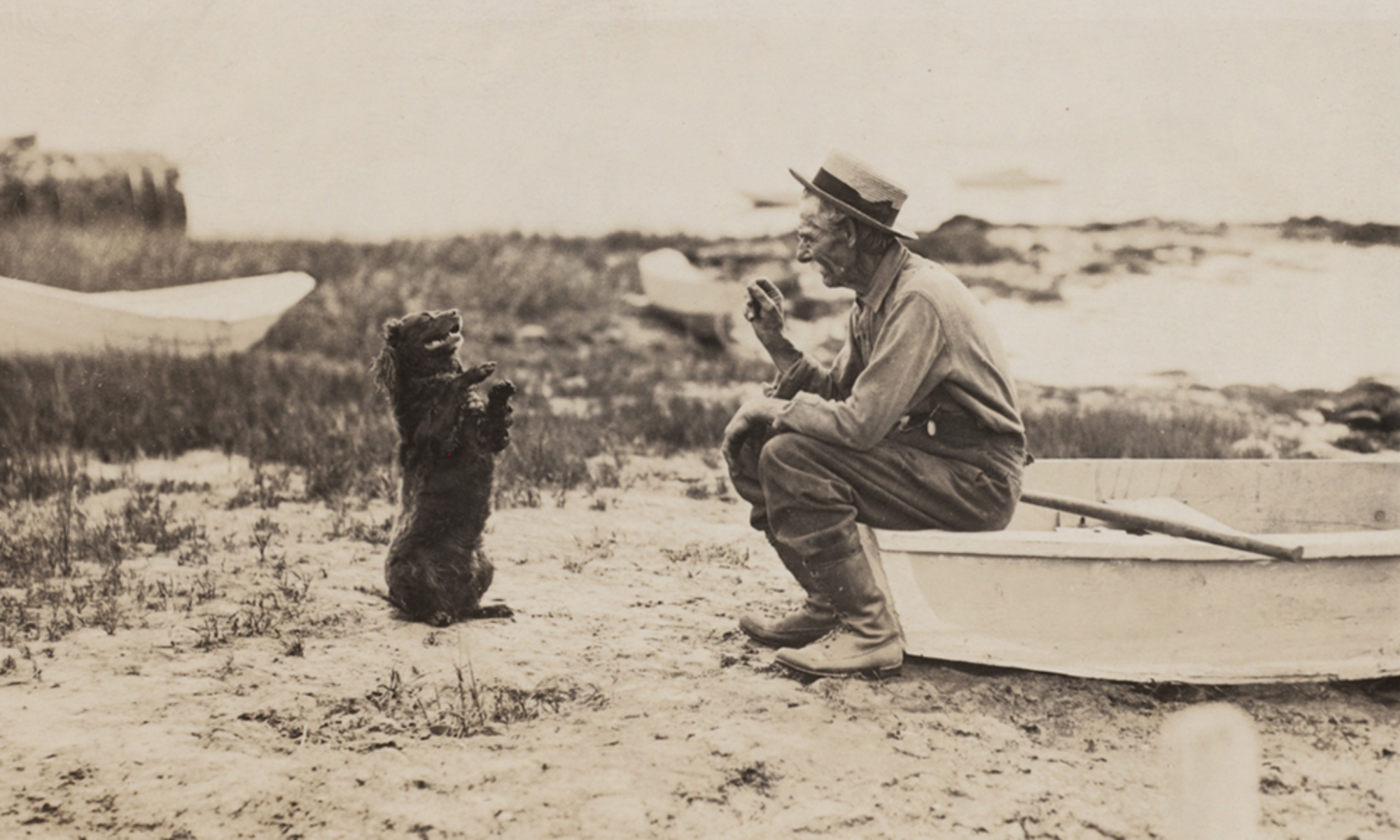The purple trains that stop in Kingston along the Old Colony line to connect commuters to the larger regional rail system have a long and interesting history.
The Massachusetts Legislature chartered the Old Colony Railroad on March 16, 1844. John Sever of Kingston was elected the new company’s first President. Just a year and a half later, on November 8, 1845, the first ceremonial train loaded with company officials and invited dignitaries traveled the 37 miles from South Boston to Plymouth. And over the next 50 years, the Old Colony line expanded to cover much of eastern Massachusetts by building branch lines, leasing existing routes and merging with other railroads.
For example, in 1854, the Old Colony consolidated with the Fall River Railroad.

In 1855, the President of the Old Colony & Fall River Railroad Company, Kingstonian Alexander Holmes, issued this pass to his “Wood Agent” and fellow Kingstonian George Adams. Mr. Holmes had secured the services of Mr. Adams in May of 1850, and charged the company $20 for doing so as his debit account shows.

The Old Colony & Fall River had become the Old Colony & Newport in 1866 (the full accounting extends to that year, the last of Mr. Holmes presidency). The company reverted to its original corporate name in 1872 after absorbing the Cape Cod Railroad. By 1892, the Old Colony Railroad stretched from Provincetown to Providence, west to Worcester, north to Fitchburg, over to Lowell and back down to Boston.
Kingston’s “local” line exemplifies the growth and consolidation of the railroad industry through the 19th century. Small lines incorporated, then grew and combined into ever-larger conglomerates. In 1893, the Old Colony’s Providence Division caught the eye of the mighty New York, New Haven & Hartford Railroad — known as the New Haven — as a direct connection to Boston. Rather than lease this important component to its larger neighbor, the Old Colony leased itself as a whole and was subsumed. The New Haven continued to expand, eventually taking over not only most of the railroads in the northeast, but trolley lines and steamships as well
In 1935, decades of aggressive purchases and accumulated debt lead the New Haven to bankruptcy (for the first time).

The Old Colony line still carried passengers, as shown by Kingstonian Helen Foster’s ticket book. The commercial artist commuted to her studio on Park Street in Boston by train until 1946, when she shifted her workplace back to Kingston. In 1947, the New Haven emerged from receivership. Despite some success in the early 1950s, overwhelming debt combined with the growing interstate system led the New Haven to discontinue service on the Old Colony line in 1959. The New Haven limped on to 1961, when it declared bankruptcy again; in 1969 it became part of the gargantuan Penn Central, which itself failed three years later, marking the final collapse of the railroad behemoths that had dominated the country for a century.
In Massachusetts, regionalism saved the rails. In 1964 the MBTA was formed and the next year, it laid claim to the New Haven’s tracks in and around Boston. Over the next four decades, purple trains began to appear along the commuter rail system. In 1997, the Old Colony line once again ran through Kingston.
